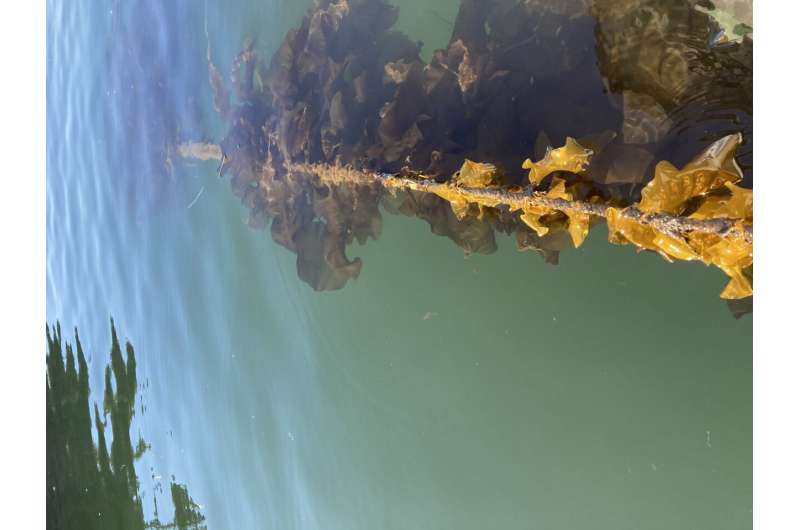This article has been reviewed according to Science X's editorial process and policies. Editors have highlighted the following attributes while ensuring the content's credibility:
fact-checked
trusted source
proofread
Kelp farms could help reduce coastal marine pollution

The water-filtering abilities of farmed kelp could help reduce marine pollution in coastal areas, according to a new University of Alaska Fairbanks-led study.
The paper, published in the January issue of Aquaculture Journal, analyzed carbon and nitrogen levels at two mixed-species kelp farms in southcentral and southeast Alaska during the 2020-21 growing season. Tissue and seawater samples showed that seaweed species may have different capabilities to remove nutrients from their surroundings.
"Some seaweeds are literally like sponges—they suck and suck and never saturate," said Schery Umanzor, an assistant professor at UAF's College of Fisheries and Ocean Sciences and the lead author of the study.
"Although carbon and carbon sequestration by kelp received most of the attention, kelp is actually much better at mitigating excessive amounts of nitrogen than carbon," Umanzor said. "I think that's a story that's really underlooked."
Nitrogen pollution is caused in coastal areas by factors such as urban sewage, domestic water runoff or fisheries waste disposal. It can lead to a variety of potential threats in marine environments, including toxic algae blooms, higher bacterial activity and depleted oxygen levels. Kelp grown in polluted waters shouldn't be used for food but could still be a promising tool for cleaning such areas.
Kelp farming is an emerging industry in Alaska, touted to improve food security and create new job opportunities. It's also been considered as a global-scale method for storing carbon, which could be a way to reduce levels of atmospheric carbon that contribute to climate change.
Analysis of kelp tissue samples from the farms determined that ribbon kelp was more effective than sugar kelp at absorbing both nitrogen and carbon, although that difference was somewhat offset by the higher density of farmed sugar kelp forests.
Umanzor cautioned that the study was limited to two sites during a single growing season. She is currently processing a larger collection of samples collected from six Alaska kelp farms for the subsequent season.
"Maybe it's a function of species, maybe it's the site, maybe it's the type of carbon and nitrogen out there," Umanzor said. "There's a lot to know in a follow-up study."
More information: Schery Umanzor et al, Nitrogen and Carbon Removal Capacity by Farmed Kelp Alaria marginata and Saccharina latissima Varies by Species, Aquaculture Journal (2022). DOI: 10.3390/aquacj3010001
Provided by University of Alaska Fairbanks





















